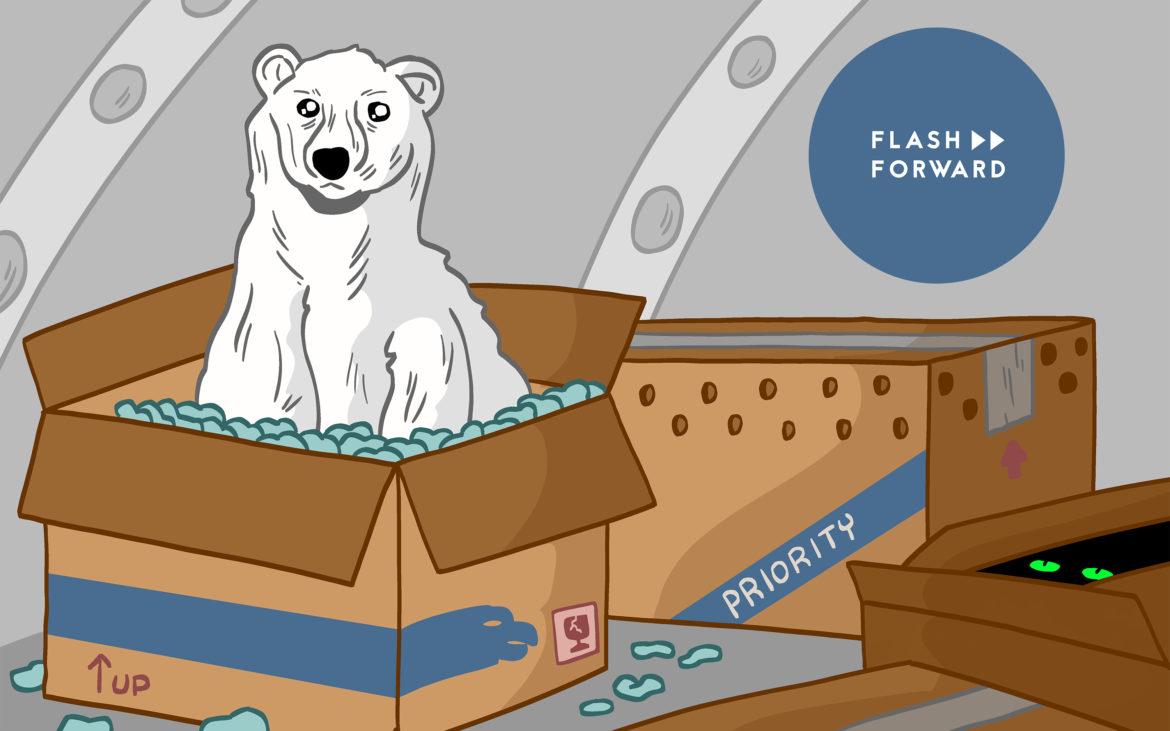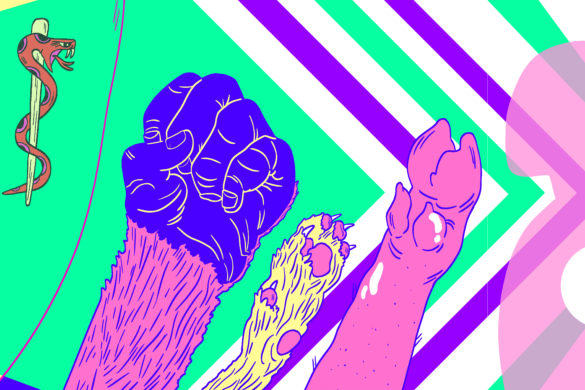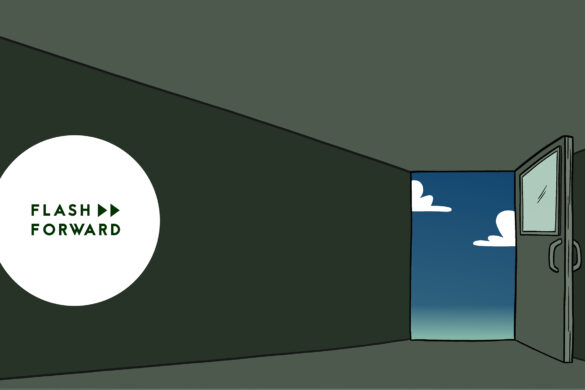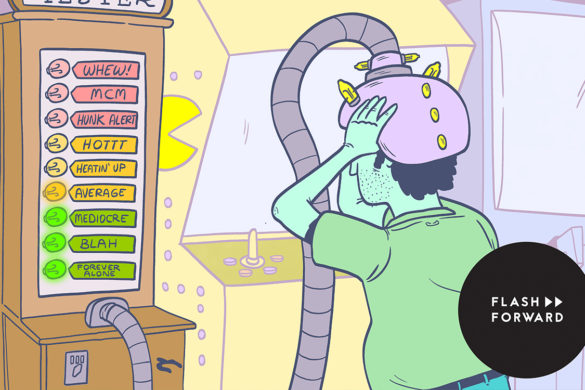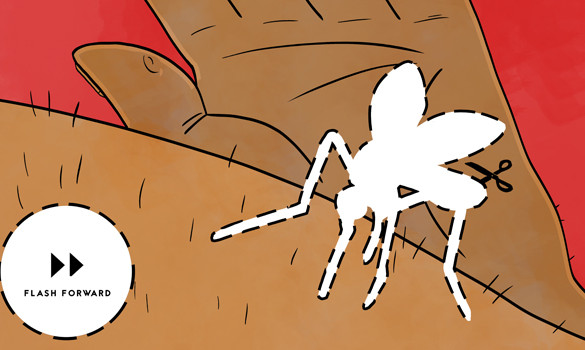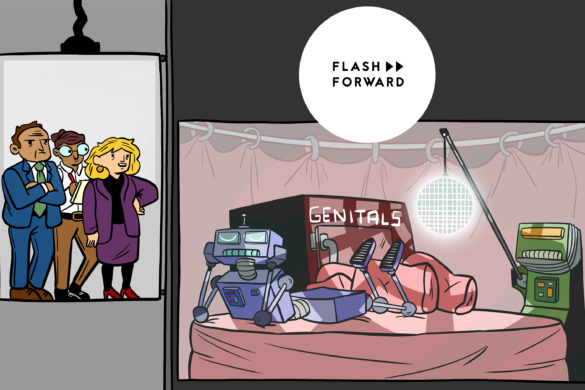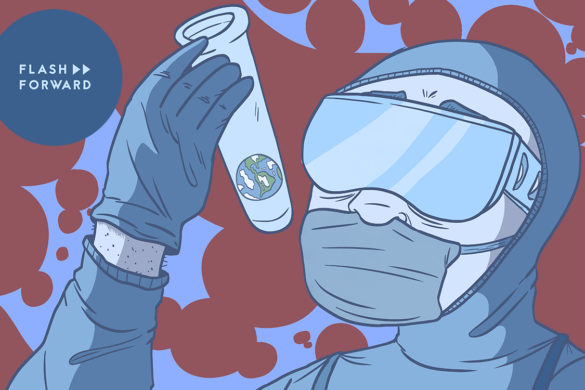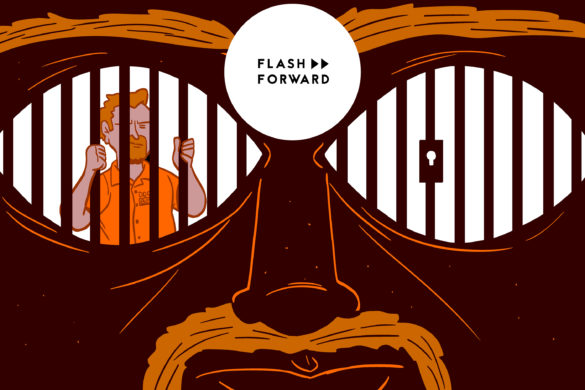Today we travel to a future where humans decide to start relocating species to save them from climate change.
Guests:
- Jason McLachlan — associate professor of ecology at the University of Notre Dame
- Cuauhtémoc Sáenz-Romero — forest geneticist at Universidad Michoacana de San Nicolás de Hidalgo
- Emma Marris — environmental writer, author of Rambunctious Garden
- Tero Mustonen — biologist with the Snowchange Cooperative & head of the Kesälahti fish base
Further Reading:
- Protecting monarch butterflies’ winter home could mean moving hundreds of trees
- Harwood’s Woolleystar
- Mexican Forest Turns Orange Every Fall Thanks to the Monarch Butterfly
- Monarch Butterfly Biosphere Reserve — UNESCO
- Monarch migration and overwintering
- Ecological Restoration of Abies religiosa Forests Using Nurse Plants and Assisted Migration in the Monarch Butterfly Biosphere Reserve, Mexico
- Abies religiosa Seedling Limitations for Passive Restoration Practice at the Monarch Butterfly Biosphere Reserve in Mexico.
- A Framework for Debate of Assisted Migration in an Era of Climate Change
- The ice age ecologist: testing methods for reserve prioritization during the last global warming
- Mitigating Climate Change through Transportation and Land Use Policy
- The Ecology of Invasions by Animals and Plants by Charles S. Elton
- Resource Science: Spotted owls and the timber wars
- Barred Owl Threat
- Rewilding in Finland
- Diné kinship as a framework for conserving native tree species in climate change
- Snowchange Cooperative
Episode Sponsors: MOVA Globes // Visit movaglobes.com/flashforward and use the code FLASHFORWARD, all one word, at checkout for 10% off your purchase.
Flash Forward is produced by me, Rose Eveleth. The intro music is by Asura and the outtro music is by Hussalonia. The episode art is by Matt Lubchansky. The voices from the future this episode were provided by
If you want to suggest a future we should take on, send us a note on Twitter, Facebook or by email at info@flashforwardpod.com. We love hearing your ideas! And if you think you’ve spotted one of the little references I’ve hidden in the episode, email us there too. If you’re right, I’ll send you something cool.
And if you want to support the show, there are a few ways you can do that too! Head to www.flashforwardpod.com/support for more about how to give. But if that’s not in the cards for you, you can head to iTunes and leave us a nice review or just tell your friends about us. Those things really do help.
That’s all for this future, come back next time and we’ll travel to a new one.
FULL TRANSCRIPT BELOW
▹▹ ▹▹ ▹▹ ▹▹ ▹▹ ▹▹ ▹▹ ▹▹ ▹▹ ▹▹ ▹▹ ▹▹ ▹▹ ▹▹ ▹▹ ▹▹ ▹▹ ▹▹ ▹▹ ▹▹ ▹▹ ▹▹ ▹▹
Rose: Hello and welcome to Flash Forward! I’m Rose and I’m your host. Flash Forward is a show about the future. Every episode we take on a specific possible… or sometimes not so possible future scenario. We always start with a little field trip to the future, to check out what’s going on, and then we teleport back to today to talk to experts about how that world we just heard might really go down. Got it? Great!
Before we go to the future today, a small bit of very exciting news. I am hiring someone. For the first time in five years, I’m finally bringing someone on to help me make this show. And that is only possible thanks to the folks who’ve supported the show on Patreon, and the new network at Flash Forward Presents. I’m not going to lie to you, I’m absolutely, completely, terrified to suddenly doublethe number of people working on this show, but I’m also really excited. If you’re interested in learning more about the job — it’s a part time associate producer gig — you can find the posting in the show notes for today’s episode. And if you want to help support the show, and maybe even help me hire someone full ltime in the future, you can learn more about how to do that at flashforwardpod.com/support. Okay, now let’s go to the future.
This episode we’re starting in the year 2031.
***
[Inside of a ship]
Captain: All good down there?
Lead Scientist: All good.
Captain: Nobody’s threatening to wake up on me?
Lead Scientist: No, we’re managing them pretty closely.
Lead Scientist: Any word on the Bulgakovs?
Captain: Nothing, so either they don’t know or they don’t care.
Lead Scientist: Or they’ve got some other plan.
Captain: Not sure why you’re so scared of them.
Lead Scientist: They sank a seal relocation boat six months ago.
Captain: Well they’re not sinking an ice breaker.
Lead Scientist: Still, they’re always… up to something.
Captain: Well if they give you trouble, you just wake the bears up and let ‘em attack right?
Lead Scientist (annoyed): They’re not trained.
Captain: That was a joke, Zin.
Lead Scientist: Oh. Right.
Captain: Never really understood the appeal of polar bears myself, if I must be honest.
Lead Scientist: What do you mean?
Captain: I don’t know, of all the creatures to spend all this time and money on, seems like a pretty big hassle.
Lead Scientist: It’s symbolic.
Captain: Of what?
Lead Scientist: Our willingness to try, our culpability, our long-term commitment to righting our wrongs and helping the Earth.
Captain scoffs/chuckles
Captain: The Earth thanks you, I’m sure.
[pause]
Captain: So what happens if the bears die out there?
Lead Scientist: They won’t.
Captain: How do you know?
Lead Scientist: I’ve run through almost every possible scenario a hundred times. The bears dying is not only unlikely, but also not even close to the worst thing that could happen.
Captain: Okay, what’s the worst thing that could happen?
Lead Scientist: Well they could wake up on the ship, and kill us all, and doom us to haunt this ocean for the rest of time.
Captain: Very funny.
Lead Scientist: But really, the worst case is that they do too well.
Captain: I thought the whole point of this was to help them.
Lead Scientist: It is, but polar bears are apex predators, if they do too well they’ll destroy the ecosystem, wipe out all the penguins, and then turn to cannibalism. Or hunting humans. Or both.
Captain: And how likely is that scenario, in your calculations.
Lead Scientist: Low to medium.
Captain: So why risk it?
Lead Scientist: We have to do something, Captain.
Captain: Do we?
Lead Scientist: I think so.
[phone rings]
Captain: Bridge … yeah… all, right. Comin’ up.
[fade out]
[Loading the bears up into the Jeeps for transport, helicopters in the background]
Lead Scientist, in a shout to be heard over the noise: Okay, you all know where you’re going. Listen to your sky team to get confirmation before you release. Nobody goes within fifty miles of the penguin colony, okay? And double check the radio collars before you administer the diprenorphine. We need those collars working.
[Driving in car]
Graduate Student: You nervous?
Lead Scientist: Of course.
Graduate Student: About which part?
Lead Scientist: All of it. The logistics, what if two teams release too close? What if a bear is allergic to diprenorphine? I can only be here with one of them.
Graduate Students: At least the Bulgakovs didn’t show up.
[pause]
Graduate Student: You’re not nervous about the press?
Lead Scientist: We can deal with them later. Head west a bit?
[radio call] Bear 4, how do you feel about this spot? You’re clear from my view.
Lead Scientist (into radio): Roger, here looks good.
[car doors opening and closing]
[hydraulic sound]
[box opening]
Lead Scientist: Collar check.
[beeping]
Graduate Student: All set. Breathing looks normal. Ready for the diprenorphine?
Lead Scientist: Yep.
[bear breathing]
Lead Scientist (quietly, to the bear): Okay buddy, easy does it. Welcome to your new home. Don’t mess this up for me, okay?
[bear huffing]
// scene
Rose: Okay! Today’s episode actually comes from a listener question. Amanda Aho wrote in an asked: “I was watching a Nature episode about bears and I had a thought/question: if we want to save polar bears, would flying them to Antarctica be a viable option? How would introducing them to a whole new continent affect their lifestyle and the ecosystem already in place in Antarctica? I would imagine the disruption would be significant, but with a changing climate would it be worth it in the end?”
This is a great question, and one that opens up so many different things. What Amanda is asking about is called “assisted migration.”
Jason McLachlan: Assisted migration is a deliberate conservation policy of, “if you’re worried about a species that might be rare or going extinct. Is it, or is it not legitimate to take the species and move it somewhere else?”
Rose: This is Dr. Jason McLachlan, a paleoecologist at the University of Notre Dame.
Assisted migration in the face of climate change basically says: look, normally, as the climate changes over time, species can move around and sort themselves out. But we humans have mucked up the climate so much, and it’s changing so fast, that many species won’t have time to adapt. Since we brought this climate upon them, we have a duty to help them with these changes. And that means moving them to places that they’re more likely to be able to live in in these future conditions.
Jason: So there’s one in the desert of California called te Harwood’s Woollystar. Harwood’s Woollystar has an adorable name, and it’s an adorable little plant; lives in the desert. And there’s very few of them. All the all the Woolystars in the world would fit in your backyard.
Rose: Harwood’s Woollystar is sort of a small, little, bushy plant that has these really cute, very tiny white flowers. A lot of the plant is covered in this fuzzy stuff, which I’m assuming is where the wooly part of the name came from, and the star part is probably describing the way that the leaves kind of form a spiky star at the end of each stem.
And Harwood’s Woollystar is probably not going to fare well when the climate changes in Southern California.
Jason: So is it an okay thing to take Woollystar, and move it to where you think it might be better? With a species like Woollystar, it’s hard to be against it, right? When you put it that way, you’re like, “oh well, come on, you’ve got to put the Woollystars, you know, give them a chance. And what are they going to hurt? Really?” But that’s the trick, right?
Rose: So, this idea — to relocate a species, to give it a chance — is both simple, and incredibly complicated. It opens up questions of what a native species even is, how you decide what an ecosystem “should” look like, and what our role is in meddling with, or perhaps saving, the Earth in the face of climate change. And today you are going to hear from a bunch of people about this idea. .Some who are for it, some who are against it, and some who still aren’t sure where they fall.
Let’s start with the case for assisted migration. And to get that perspective, we’re going to travel south from the homeland of the Harwood’s Woollystar, and into Mexico.
Cuauhtémoc Saenz-Romero: These trees cannot walk. But the climate is going upwards in the mountains.
Rose: This is Dr. Cuauhtemoc Saenz-Romero,
Cuauhtémoc I am a researcher at the University of Michoacan. It’s a state university located at Morelia City, which is the capital of the state of Michoacan. We are in the central west of Mexico.
Rose: While all trees cannot walk — with rare exceptions — the specific trees that Cuauhtemoc spends most of his time thinking about are called sacred firs, also known as oyamel. These trees grow at high altitudes in the mountains of Michoacan, and other parts of Mexico.
And sacred fir trees are really important for an iconic animal species that you’ve almost certainly admired before: the monarch butterfly. Every winter, about 200 million monarch butterflies hibernate in the forests of Michoacan, many of them in the Monarch Butterfly Biosphere Reserve. In the spring, they leave and flap their way north and spread across the United States and even up into Canada, only to return again every winter. And here’s something I actually didn’t know about this big migration, it’s not that one butterfly flies all the way North, and then all the way South again.
Cuauhtémoc: There are between four and five generations between a monarch that departs from Michoacan; go to Texas; die there before [they] put the eggs, and then the new generation arises. And then that is one generation more, one generation more until reaching the south of Canada, and the next generation comes back. So is four to five generations. So it’s obviously something that is obviously inherited, somehow. Some kind of navigation system to do that.
Rose: And this makes the fact that these butterflies are able to come back and find these very specific trees in this very specific place extra incredible.
The trees and the butterflies and their location all come together to create the perfect, exact habitat that everybody needs. Wintering monarch butterflies require a really specific set of conditions.
Cuauhtémoc: when they are here, they live mostly off the fat reserve that they have accumulated in the way from Canada to Mexico, especially in Texas. The accumulate a lot of fat.
Rose: If it’s too hot, that fat winds up causing them to overheat. But if it’s too cold, they have another problem.
Cuauhtémoc: IF the wings of the monarchs get wet, and the night is very cold, the ice forms on the wings and they die.
Rose: The sacred fir grows at the right altitude to keep the butterflies cool enough, and its branches provide protection from the rain and chilly nights, and keeps the monarchs warm enough that they don’t die. It’s this really delicate and perfect balance.
But, of course, with climate change, experts worry that that balance is going to get completely thrown off.
Cuauhtémoc: So far the hard data indicates that the worst scenario is what is going on. So we are directly to the worst scenario, and for 2060 with 2.5 degrees.
Rose: That’s 2.5 degrees Celsius, based on climate modeling. And if that happens — which many people think it will — these trees probably won’t be able to grow where they currently do. The butterflies will get too hot, and they won’t be able to find protection from the rain and the cold nights, and they’ll die So, what do we do? Well, Cuauhtémoc says, we have to move the trees up the mountains.
And that’s the work he’s been doing with his team and collaborators. They’ve done experiments on which seeds to use — whether the local trees are actually the best ones to use or not, where to plant them, what the trees need, and they have a set of experimental trees planted at higher altitudes. But even that might not be enough, he says. They might actually need to go higher. But going higher, in the Monarch Reserve, is impossible.
Cuauhtémoc: These summits of the Monarch Butterfly Biosphere Reserve, is about 3500, 3550. And that summits are just, you know, a small place with rocks. So we have a limit, which is the limit of the summit of the mountains. So we need to go beyond that for 2060 and 2090, for sure. Our options are all the higher volcanoes, Popocatépetl, Iztaccihuatl, between Puebla City and Mexico City; Nevado de Toluca, which is close of Toluca City; Pico de Orizaba in the slopes of the Veracruz state. Those volcanoes are more than 5000 meters high. And we need to, in my view; — and this is controversial and some people think that I am sort of crazy, and I hope not — but the big challenge is to establish a new forest of Abies religiosa beyond the altitude limit that they have today
Rose: But even if you can get the trees to live on these other mountains, there’s still a huge question… will the monarchs find them? They’ve never gone to these places on their migrations before.
Cuauhtémoc: And then its going to an issue of hope. The hope will be monarchs may be able to change this compass system that they have inherited and is passed on in five generation, one to another, to come back to Michoacan, and change over-wintering sites to a different mountain. We don’t know that, but we think that we have room for hope. I think my responsibility, as researcher, is to find a way to have healthy trees in the field to adapt to the future climate and see what happens. I cannot promise more than that.
Rose [on the phone]: Right, fingers crossed that the butterflies can find their way.
Cuauhtémoc: Yes, exactly. Exactly.
Rose: The challenge in doing some of this research, and moving thes trees around, is that you’re trying to put plants into places that they won’t do well in yet, but you think they might do well in in the future.
Cuauhtémoc: The projected future climate do not happen yet; it’s going to happen. We’re progressively moving into a warmer and drier climate, but its not happening… the 2060 climate has not happened yet. We are in 2020. So, the challenge, the immense challenge, of this is, if we move too much — the ceilings — it’s going to be killed by frost.
Rose: So if they go too far, the seedlings won’t survive the frost. But they have to start now, to see if they can grow at all, and to establish a population before it’s too late.
Now, Cuauhtemoc did not always think that assisted migration was the way of the future. In fact, he told me that in 2009, at a conference about forests in Guatemala City, he was surprised to hear a very prominent researcher endorse this idea.
Cuauhtémoc: I was translating, and he says, “in the future, the healthy trees that are going to be…the healthy forest of the future is going to be planted forest, with assisted migration.” It was 2009, and I was very shocked by that sentence. That sounds to me very radical. That was 2009. Now, it has been 11 years, and I am convinced that he was right.
Rose: But, f course, not everybody is gung ho about this idea; not everybody thinks we should move species around this way.
Jason: So what’s the difference between assisted migration, and just introducing invasive species? Biiologically, maybe there’s not a big difference. Ethically, and in terms of human values, there is a big difference, and that’s an interesting thing. Right?
Rose: And when we come back, we’re going to talk about the scientific, legal, logistical, and ethical quandaries here.
But first, a word from our sponsors.
[AD BREAK]
Rose: So let’s say that we decide we do want to do this, that we do want to start picking up certain species and preemptively moving them, to help them get ahead of climate change. There are a few questions here that we have to answer: biological, ethical, legal, philosophical. Probably some more things that end in -al that I’m not thinking of riight now. So let’s start with the law: are you even allowed to move stuff around like this?
The answer to that is basically the same as the answer to every legal quesrtion: sometimes yes, sometimes no.
Jason: We have a bunch of rules and regulations to prevent that. We spend millions or billions of dollars a year — billions of dollars a year — to avoid invasive species.
Rose: That’s Dr. Jason Maclachlan again. Some states have checkpoints at the border to make sure that you are not bringing in certain plants or animals that might post a problem. A lot of the proposals for assisted migration that are out there focus on plants. And that’s, in part, because, as we noted before, plants cannot walk.
Jason: If I allow an animal to be introduced to nextdoor’s property, that’s different from plants. You’re much more responsible. And it’s because animals move — well, you know, barnacles accepted — animals move all the time. And so it’s more obvious. It’s just a more immediate thing. The plants will move, but they just move once every generation.
Rose: And, generally, the laws are slightly less strict when you’re talking about plants.
So you might need special, legal, permission to even try this, which you’d have to get through various governing bodies, depending on where you are. And often, the people in charge of things are pretty skeptical of these ideas.
A few years ago, Cuauhtemoc tried to do a study on relocating endangered Mexican spruces.
Cuauhtémoc: And we modelled the suitable climatic habitat. And we’ve found that for 2060, the Mexico model is going to disappear, the suitable climatic habitat for Picea martinezii. And we found marginal suitable climatic habitat inside the Monarch Butterfly Biosphere Reserve.
Rose: So Cuauhtemoc was like “great, we’ll just bring these super rare species here, and we’ll plant them and give them a place to survive.” And he went to the people who ran the reserve at the time.
Cuauhtémoc: And we said, “could we do experimental provenance test inside them Monarch Butterfly [Reserve] with this Picea that otherwise is going to be extinct?” The answer was absolutely no. Because the Mexican law says that in a natural protected area, you can not plant the species that aren’t native, endemic in this protected area.
Rose: And Cuauhtemoc admits that that rule makes sense — or at least, it made sense for a long time. But he argues that things are changing, and conservation practices have to change too.
Despite these rules, there are some groups of people who are taking things into their own hands. One of those groups is called the Torreya Guardians, and they have been focused on saving the Florida torreya. There are only 1,000 Florida torreya trees left in the world, and the trees are not reproducing. So a small group of botanists and activists have been planting these trees in other places tat they think that they might do well in, to save them.
Now, so far I’ve kind of made it seem like you just model where the trees should go, figure out their ideal future habitat, and plant them there. Unfortunately, its actually not that simple. Iit turns out that figuring out where to put these species you want to save; figuring out where they will be able to live in the future, that’s actually really, really complicated.
Jason: When you look at the distribution of a species, there will be a certain climate that it lives in. But that distribution is not just determined by the climate; it’s determined by all the other species that live with it. And those could be competitors. Let’s take a plant, for instance,: a Woolystar. It could be competitor species that slow its population growth rate. It could be a predator that eats it. It could be a pathogen. And all of those things interact with the environment inother in other, sort of high dimensional ways, that are hard to really understand.
Rose: In other words, just because the climate might match the current climate that a plant lives in, that doesn’t necessarily mean that planting it there will work. It might rely on some other species to live, or it might require another species to control it, so it doesn’t take over.
Jason is a paleoecologist, he studies how ecosystems used to be, and how they’ve changed over time. So I thought that maybe his work could help people predict into the future how our current ecosystems might change, and which species might do well where. But, when I asked him how his work could inform these choices he said… that it basically can’t.
Jason: I feel like I’m gonna be a downer on this one. You set me up. You teed up positive message.
Rose: Jason says that what he’s learned over the years is that we’re really bad at figuring out what conservation choices will be the “right” ones over time. In fact, Jason actually did an experiment to see if they could have helped conserve species back in the Ice Age, when another warming event happened.
Jason: And what we did was we pretended that we were Ice Age ecologists at the start of the Holocene, which is the warm period that we live in now. So global warming is happening. CO2 is rising. Species… the wooly mammoths are shifting. The spruce forests are in decline.
Rose: So, knowing what they know now, could they come up with a way to save these ecosystems, to preserve them? Could they design reserves to preserve the biodiversity with the tools that they have now? So they came up with a bunch of ideas, of how they might have done this if they had been alive during the end of the last Ice Age…
Jason: And then we run the tape forward, and see how we did. And it was terrible. It was worse than random, for most cases.
Rose: The point here is that it’s really hard to know what’s going to happen when you make conservation choices. Ecosystems, and the climate, are both incredibly complex, and they change and shift in ways we don’t fully understand.
Jason: So, assuming that we know enough to manipulate and manage the entire biota of the earth is asking a lot. And I’ve been an ecologist for many years, and I know that our field is wonderful, and we know a lot, but we cannot tell you where to put all the species, even if we thought we could do it.
It’s not going to stay where it is and it’s not going to go where you think it’s going to go. So I think that the big lesson of paleoecology is humility about this stuff, and recognizing the uncertainty.
Rose: Now, you might think that this means that Jason is against assisted migration. But he’s not. He used to be, but over the years, much like Cuauhtemoc, he actually changed his mind.
Jason: Yeah, Alex Camacho convinced me. Alejandro Camacho is a law professor at Irvine. He’s the one I’m working on the Woollystar paper with. I had the same sort of established view that I think most people do, which is that if someone wants to move a new species into a place that I know and love, I would be skeptical of it and that it might seem a lot like just introducing invasive species. And Alex’s question was, “well, who gets to decide whether that’s good or not?” Because you’re making a normative judgment, a value judgment. What you’re saying is not objectively determined by the science. I can tell you, for sure, that this is the native community. I might even be able to tell you which species are risky to introduce or not. But whether that’s a good thing or not, science has no say in that. That’s a human value that we come up with. And so Alex’s question for me was like, “who gets to decide that?” And I was like,” well, the experts, obviously.” I happen to be a person who, you know, who is right on this. And Alex is like, “well, where’s that coming from?” And he really got me to think about this line that I think a lot of us professionally should probably think more about.
You just get used to it. It gets ingrained. And you start thinking that your expertize gives you moral authority, which it doesn’t. And then I was like, “Jesus, Alex, if we do that, everyone’s just going to want pandas, like everywhere, you know?” And he was like, “well, you know, convince them that that’s not the way to go.”
Rose: Pandas everywhere! But seriously, this is the reason assisted migration is such an interesting idea to me. Because there really isn’t a correct science answer here. These are questions about values; about what people think the world should look like. Everybody involved in these conversations has their heart in the right place, right? They all want to help the animals and plants, and make the world better.. But what does that actually mean?
Emma Maris: It’s also, philosophically, really interesting because it pin two really core values of conservation against each other. And one is this idea of native-ness, and keeping things native. And the other one is stopping things from going extinct. So, if you’re kind of committed to native-ness, and you’re also committed to biodiversity, then the assisted migration question makes you choose. And that’s a tricky one.
Rose: And those are the questions we’re going to tackle after this break.
[AD]
Rose: When we spoke, Jason told me a story that kind of sums up a lot of the weirdness about this question of moving, or not moving, species.
Jason: So years ago, I was having this conversation with a Dutch friend of mine who was very concerned about endangered plants in the Netherlands. Rare species, and they’re threatened by climate change. So, I asked her — because I had been thinking about this — “what would you say to someone, who, you know, was sort of forward thinking and they say, ‘well, just let’s have a little reserve of them in Sweden, a little farther north, just in case.’ Would that be a good idea?” And she was like, oh, that sounds like a totally reasonable thing. And then I said, “so, presumably, you wouldn’t have any problem, then, if a Spanish ecologist wanted to move some Spanish plants to the Netherlands?” And she was like, “well, well, wait a minute. Now that, you know, we’d have to talk about that.”
Rose: A lot of us have these romantic ideas about what our local ecosystems should look like, and that almost always involves a conversation about keeping out “invasive species.” But who decides which species are invasive?
Emma: I hate the term invasive species so much, because it really sort of seems like the species are doing it on purpose, right? Like, the species are like, “hey, men, let’s go invade”, you know. And it’s just that’s just not how it happens.
Rose: This is Emma Maris, an environmental writer based in Oregon, who’s been covering these debates for years now. And she has a real vendetta against the term “invasive species.”
Emma: It was ecologist Charles Elton who came up with this whole framing, in the 1950s, in a… it was a really Cold War kind of framing. And he was intentionally using military metaphors to try to get people to take notice. And it worked. It really worked. He was like, “this is an issue that nobody pays attention to. So I’m going to use all these metaphors of bombs and invasions.” And, yeah, it was a brilliant rhetorical strategy. And now we’re stuck with this notion of species that are somehow intentionally causing problems, or bad guys, which drives me bonkers.
Rose: Exactly what makes something natural, native, specific to a place, can be really hard to pin down. There are species today that we’re not actually sure of their origins. Even in places like Hawaii, or islands that have limited contact with sources of new life, it can sometimes be hard to know whether a plant or animal originated there, or was brought over by early humans, or perhaps drifted there on its own. And it’s even harder when we talk about a connected landmass. And these thorny questions wind up getting us into weird situations where you have to defend one animal, but not another. Take, for example, owls in the Pacific Northwest.
For many years, the spotted owl has been an iconic species in Washington and Oregon. And the spotted owl became extra symbolic in the 1990’s, when the region was embroiled in the so-called “timber wars” — in which conservationists demanded that large swaths of forest be preserved to protect these little spotted birds.
Emma: Growing up, I remember seeing bumper stickers about shooting spotted owls, and running them over, because they were seen as a threat to a whole way of life, a whole culture of logging and timber. So, yeah, a poor little bird, with a huge amount of cultural baggage on it shoulders.
Rose: [on the phone]: Right and the spotted owls probably have no idea.
Emma: Yes. I mean, that’s something I feel like ecologists, and us as laypeople, we should just put a Post-it note on our computers that says, “they don’t know.”
Rose: Today, the birds aren’t just threatened by human driven environmental degradation. They have a new bully in town. And it’s… another owl.
Emma: Barred owls, which are kind of relatives of theirs from the East Coast, have moved across the country. They started moving around 1900. You know, they got to the Rockies in the 30s. They got to Oregon in the 90s, and now they’re just kicking the spotted owl out of their habitat. Taking their nesting sites, taking their territories. And then also mating with them. So creating these hybrid owls. And the conservationists who are trying to save the spotted owl are freaking out.
Rose: Nobody knows what drove the barred owl west. It could have been a lot of things. Maybe a little bit of climate change, a little bit of habitat loss. Whatever it is, they have arrived. And they’re winning. And this is an awfully uncomfortable problem for conservationists in the Pacific Northwest. Which owl do you stand behind? Should they help out the spotted owl? Keep the barred owls out? In 2013, the Oregon Fish and Wildlife Service decided to stick up for the spotted owl by shooting barred owls.
Emma: They’ve shot over two thousand barred owls to save the spotted owl. And even the people who are doing the shooting admit that this is not fun, or easy. Shooting owls feels terrible, and they hate to do it. So they’re kind of stuck, again, in a clash of values. They don’t want to see the spotted owl disappear as a distinct species. But at the same time, you know, they love nature, and shooting an owl doesn’t feel fun.
Rose: And this all seems… I mean it’s weird right? What are we doing here,e exactly? What’s the point of this? To preserve some kind of “natural” state that even a paleoecologist couldn’t have replicated, or predicted? One that will change on its own anyway? It’s hard and it’s complicated. But we can’t really talk about native and non-native species without acknowledging that pure, hard, traditional “science” — that’s air quotes in case you can’t see me, which you can’t because its a podcast. But you could hear them maybe — isn’t the only way of knowing an ecosystem.
In many places, indigenous people have very deep, and long running relationships with the land, and the species that live on it alongside them.
Tero Mustonen: Traditional cultures, especially in the north, and indigenous cultures, have positioned and formed close relationships with certain key species. For example: salmon, eagle, reindeer Reindeer herding is, of course, a very old ancestral occupation and way of living with the land in Siberia, and this part of the north.
Rose: This is Dr. Tero Mustonen, a fisherman, a resident of a traditional community in Northern Finland, and a researcher with an organization called the Snowchange Cooperative, which works with traditional communities like his, and indigenous people in the Arctic, to try and preserve and understand their shifting environment.
Tero points out that for many traditional and indigenous communities, assisted migration already kind of happened to them.
Ter: For example, seable, which is a fur bearing animal, was transplanted, and moved around in Siberia. There’s an indigenous group called Evenki in Siberia, and one of those communities, where Snowchange has been working with them, at their request. There was a famous hunter, and reindeer herder, Vladimir Kolosov. And Kolosovwas saying that we don’t have a lot of songs about the sable because the Soviets introduced it in this area. And in our, shall we say, native animals, and with our native animals, we have songs and our own ways of relating to those animals, as a part of the ecosystem and forming these good relations between humans and animals. And, in a way, that that’s a pretty profound statement, The indigenous knowledge is also assessing, observing, and forming these relations using songs, as well as many other things.
Rose: They had no song for the sable because the sable wasn’t really part of their family; wasn’t part of this set of relationships with the land.
And of course, there are obviously some historical examples of species being introduced places, and genuinely causing tons of problems. In fact, remember the stoat you just heard about? They were also introduced to New Zealand in the late 1880’s, after farmers complained about rabbits — also not native to New Zealand — that were eating their crops. The idea was that the stoats would eat the rabbits, and there would be no more problem. But they did not, in fact eat the rabbits. Instead, they ate the many birds that lived in New Zealand, and nested on the ground, because for most of the island’s history there were no mammalian predators to worry about. Today, New Zealand is spending billions of dollars to try and get rid of these stoats.
So while it might be hard to tell from traditional sources of data what has historically lived where, there is a lot of knowledge kept by folks who have this really long relationship with the land and, the creatures on it. Any kind of conservation strategy should always take that knowledge into account, and listen to the desires of the people who have lived on the land the longest and most intimately.
And this is not mutually exclusive from science. These are not two totally different things. There’s a super interesting paper that I will link to in the show notes, by Jamie O Yazzie, called “Diné kinship as a framework for conserving native tree species in climate change.” And that paper talks about the ways that indigenous knowledge can be useful, even in thinking about how you apply modeling tools.
Tero is an advocate for what is basically the opposite of assisted migration — a conservation method called rewilding. Rather than moving species around to try and predict where they might do best, and save them in the future, Tero believes that if you restore ecosystems to their healthiest current state, they’ll be more ready to adapt to climate change as it happens, naturally.
Tero: Even if everything’s under change, there is still a lot of hope and meaning in preserving intact natural habitat. So, if we have a wetland, or a marsh mier, or a river system that’s still relatively intact, while the species will come and go, or there will be impacts from climate induced changes, they will be still better off, even than new species when they arrive here on natural habitats.
Rose: The work that Snowchange does has three main elements. Protecting environments that are currently healthy,. Restoring places that might have been destroyed by human use like mining or logging. And the third on is restoring the rights of indigenous communities to their land, so that they can make management decisions directly.
Tero: For example, in Finland the communities and indigenous Sami don’t have any land or water rights at all. There’s no land rights or treaties between indigenous peoples and the state.
And that’s why the idea that we are reclaiming and restoring lands which were degraded by state or industrial land use before, and we nurture them back into health to have a fighting chance. And also increase equity and rights in conservation and land based lifestyles. That’s very exciting.
Rose: This work is about whole places, not individual creatures, the way that assisted migration tends to be. Tero argues that focusing on one species, or even a handful of species, misses the complex relationships between the land and the life that lives on it, humans included.
Tero: And that’s why the focus on single species, like the polar bear, is, in a way, cute at the beginning. And it’s very appealing, and people feel probably that they are taking action. But it’s actually far more important to tackle the whole system-wide, or ecosystem-wide, approach, combining indigenous knowledge, values, ethics and science.
Rose [on the phone]: Do you think there’s ever a situation in which humans should assist a species to move somewhere else? Is that ever something you’d consider?
Tero: It is very hard to say a general yes or a no. We’re also sitting in the sixth extinction wave, of losing hundreds of species a year, many of which have never been identified by by science or understood how and what kind of a role they play in ecosystems. At the same time, in many ways, for indigenous peoples all life has inherent value. So, the fact that there are species that they consider to be of high importance, and consider themselves essential or key relations. That’s, I guess, what the word would be. In that context, I have seen many communities fighting, fighting and trying to preserve those last stocks.
Rose”: We are staring down huge environmental problems. Climate change, extinctions, things that nobody has lived through before, nobody has seen before. And it’s really hard to know what the right thing to do is. Maybe sometimes you can move a keystone species a little bit further north, or a little bit up the mountain, and give ecosystems a head start. Maybe other times you should be trying to shore up what you have, so that it’s ready, prepped like a boxer for the fight of its life.
I think one of the things that’s interesting to me about this question of assisted migration is the question of duty. If we humans have wreaked havoc on the environment, do we have some obligation to… do something to fix it? Does that mean we have a special job to conserve our planet extra?
Emma: I think that if you do buy the notion that a species can have collective responsibility, and I sort of do, then we do have obligations to sort of, quote unquote, fix things. But I think we’re in this tricky moment where we don’t really know how to fix things. You know, fixing things in these incredibly complicated ecosystems, that are still beyond our understanding, all the dynamics of how they work. Us blundering in there and trying to fix things might, in many cases, do more harm than good.
Rose: One thing I think about a lot, is whether it’s actually a good idea for humans to consider themselves the CEO’s of the Earth. For one thing, we haven’t really done a great job so far. I, personally, would say our performance has been sub-par. But for another thing, I think there’s a real sort of philosophical shift when we start to frame our role here as being in charge of the planet. As the architects of some vast, LEGO structure where we build and take apart and rebuild as we please.
Rose [on the phone]: Do you ever worry that, by saying “we are assuming responsibility,” that that might backfire, in some way?
Emma: Absolutely, yeah. I think it’s really problematic. Because on the one hand, I’m saying that there is no option to not intervene, because deciding not to intervene in any given situation just means that all the other human influences are going to run rampant. So, every decision is a decision you have to make. But on the other hand — and I’m saying that we have enhanced responsibility for the non-human world because of what we’ve done — but on the other hand, I’m saying that we’re pretty terrible at it. So, we have to balance, kind of, the virtue of humility against this responsibility to the non-human world. I think that’s where we’re at. We’re at this really teetering, tottering point where we need to be humble, but we also need to realize that we can’t just “let nature take its course.” because we kind of broke it. So we bought it.
Rose: In this future, if we do decide to start moving things around, that process is going to be really complicated, and different each time. And there are no clear answers here. Maybe sometimes the answer is to move something, and sometimes the answer is to stay put.
Emma: And so, unfortunately, deciding whether to directly intervene and manage, or whether to observe and see what the other species do, is going to be a totally case by case decision that you’re going to have to make, with yourselves, and with people in your agency, and all the stakeholders, and people in the community, and any indeigenous groups that have any connections with any of the species that you’re working with. And so, it’s going to mean a massive decision making process for every single one of these conundrums. But I can’t really see any way around that, because if we decide to intervene in every case, we’ll become arrogant. And if we decide to not intervene in every case, we’re going to demonstrate a lack of care.
Rose [on the phone]: My last: question for you is: if you were in charge of the world, and you had two choices, and only two choices — either we are not moving anything, and we’re just trying to conserve everything as it is. Or, we are moving everything everything willy nilly, just like go full on; let’s do it. Which one do you think is the better option? Which would you pick?
Jason: So I’m in charge of the world, but there still global warming? I’ve done, I’ve done, I’ve done… so I’ve made a terrible mistake.
I would make an argument that’s not based on science, but based on… not even ethics. It’s really just an emotional sense of how nature works. The beauty of life is its adaptability through extinctions and recovery. And this may be a great extinction, like the ones, the five we’ve had before. But life will persist. And that’s how life has dealt with things in the past, and that seems. fitting, somehow, to how biology has always worked. Let me just put on another hat, and say the alternative — which is also depressing but comes from a different perspective — is humans are fixers. We’re like, you know, gung ho changers. And maybe we should just embrace our human nature, and change everything and take responsibility for it. So, I think each of those things is deeply flawed and sad. But you could make an argument either way. I might go for the first one because I’m a nature lover.
Rose: Okay, we started this episode with a question about polar bears. And I have not talked at all about polar bears. So just to close the loop here, I did reach out to a polar bear expert to ask about this. And here’s what Dr. Andrew Derocher told me, he said, “Polar bears would love Antarctica and they would thrive there. Of course, there are issues. It’s against the Antarctic Treaty to bring species there. They’d devastated penguin and seal populations (possibly drive some to extinction).” Okay, so we shouldn’t do that. But he did end his email with this note, which I thought was very interesting. He said, “there are vague ‘rumours’ that a US general proposed moving polar bears to the Antarctic in the 1950s. I’ve never seen a firm source on this issue so it’s a bit soft.” So, there you have it, polar bears, not a good idea in Antarctica unless you only care about polar bears, and not about anything else that already lives in Antarctica. And as for the rumors, I also couldn’t find anything about this, but if you have a source in the US government who can confirm or deny the fact that they were trying to put polar bears in antarctica in the 1950s, please let me know… I would like to ask some questions.
[music up]
That’s all for this episode. Although I do want to say that there were so many things I learned in reporting this episode that I couldn’t include here, just because we don’t have three hours for this show. For example: Did you know that some people want to feed polar bears? Instead of moving them, this proposal says that we should just drop meat out of helicopters to keep them alive. I also learned some fascinating stuff about what, exactly, makes an ecosystem one type or another, and how the long-running theory that explained that was recently turned on its head. Emma and I talked about how to consider the conservation of hybrid animals, like the offspring between a barred owl and a spotted owl; is that a failure of conservation? Or is that a good thing because the genes from the spotted own will live on? There’s just so much stuff, and I’m going to try and stuff it all into the bonus podcast this week, so if you want to hear that stuff, please consider becoming either a Patron or a member of the Time Traveler program, you can learn more about all that at flashforwardpod.com.support.
Flash Forward is produced by me, Rose Eveleth. The intro music is by Asura and the outtro music is by Hussalonia. The episode art is by Matt Lubchansky. The voices from the future this episode were provided by OJ Carrasco and Cassandra Short who are both patrons, as well as Keith Houston, who you heard on the BODIES mini series last year. You can check out Keith’s voiceover work at keyvoicevo.com and listen to his radio show “This Eternal Afternoon” every Sunday at 4:30 PST on twitch.tv/rogerniner. “This Eternal Afternoon” is like a landscape painting with music, anything that fits for a long and lovely afternoon. Also, since Keith is my go-to source for karaoke news, I will also add that he says that karaoke will resume at some point in the future, when it is safe to be inside and sing/yell around strangers.
If you want to suggest a future we should take on, send me a note on Twitter, Facebook or by email at info@flashforwardpod.com. I love hearing your ideas! Obviously, this episode came from a listener, so thank you, Amanda, again for that. And if you think you’ve spotted one of the little references that I’ve hidden in the episode, email us there too. If you’re right, I’ll send you something cool. Shout out to everybody who got all of the Princess Bride references last episode. And, if you didn’t, you can go back and listen for them, and now you kind of know what you’re listening for. If you want to discuss this episode, some other episode, or just the future in general, you can join the FB group! Just search Flash Forward Podcast and ask to join. There is one question you have to answer when you ask to join, and if you do not answer it, I will not let you in because you might be a robot.
And if you want to support the show, there are a few ways you can do that too! Head to www.flashforwardpod.com/support for more about how to give, and make this whole thing possible, especially now that I’m hiring someone. But if that’s not in the cards for you, you can head to Apple Podcasts and leave us a nice review or just tell your friends about us. Those things really do help.
Okay, that’s all for this future. Come back next time and we’ll travel to a new one.

